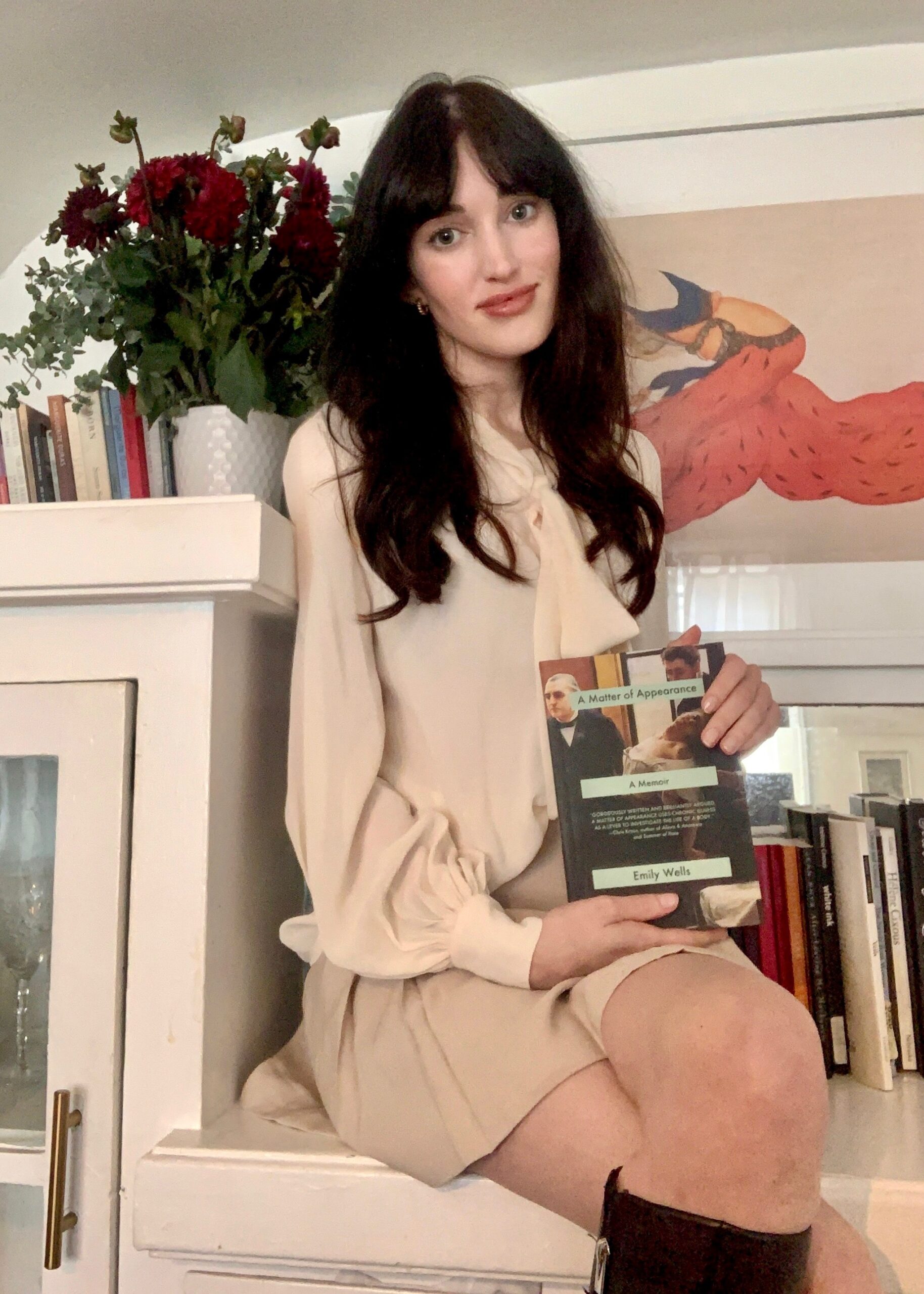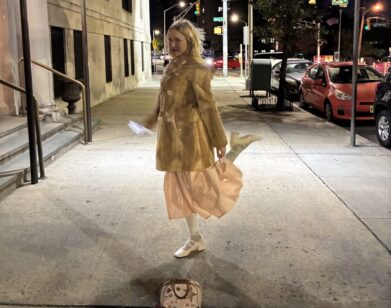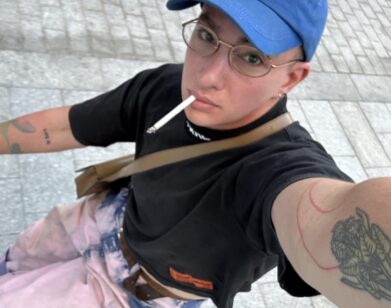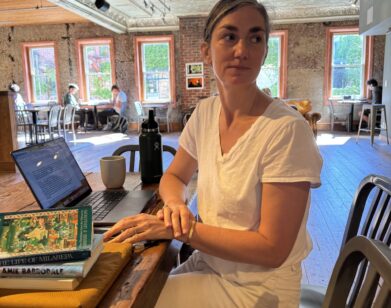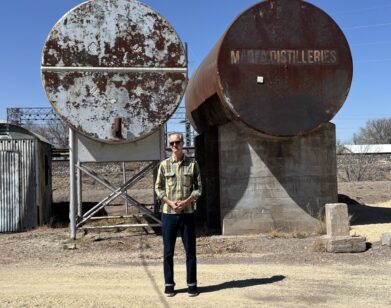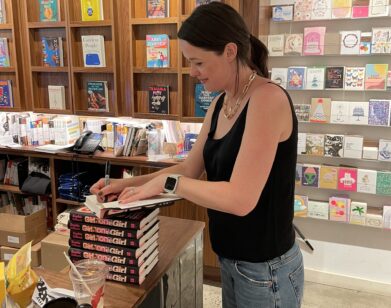OPEN BOOK
Memoirist Emily Wells Shares Her Guide to the Bookstores of Eastside L.A.
This is OPEN BOOK, a monthly column in which we ask debut authors about their reading and writing habits. Last month, we spoke with Amelia Possanza, whose book Lesbian Love Story: A Memoir in Archives tracks lesbian romance narratives across history. For this installment, we spoke with Emily Wells about her memoir A Matter of Appearance. The book provides a moving account of the author’s struggle with chronic illness and examines hysteria in 19th century France and the physical and psychological demands of ballet. Wells took the time to answer our questionnaire, getting candid about everything from writing in the bathtub to “associative” bookshelf organization.
———
Where do you like to write?
In bed. Generating insight is easiest for me in repose. If I’m in the “reading and note-taking” phase of writing, the bath works, too.
When do you like to write?
As a worker, my life is structured, at every turn, by the conditions of my working life, so the true answer is: whenever I can steal back some of my time. Because I teach, this is usually the weekend or over the summer. Perhaps a more fun answer: after seeing a great outfit. I love to see the way people describe themselves with clothes, or to imagine the consciousness who would put together a particular ensemble.
What’s the first thing you did after you turned in a draft of your book?
I got really high and read some books which had nothing whatsoever to do with my book.
Tell us about three to five books you read while writing your own, and why?
I started the book as a novel in a fiction MFA, and initially read countless critical texts I thought would inform the work: everything by Hélène Cixous, Freud’s Studies in Hysteria, and Felicia McCarren’s Dance Pathologies, which is a phenomenal academic text which examines dance’s relationship to symptomatology and the history of hysteria.
When I came around to writing in the first person and sold the book as a memoir, I wrote a great deal about the life of another woman, an 1800s hysteria patient who captivated me as I learned to live with a debilitating illness. I was less concerned with either of our stories than the larger context in which we recognize them. To this end, Julia Kristeva’s Teresa, My Love was invaluable to me. It’s a 600-page novelization of the life of Teresa of Avila spanning biography, theory, and a play, so it really models the pleasure of following a subject wherever it leads. I loved seeing what Kristeva did with Teresa’s autobiography, which I had mainly considered as an exceptionally rare and detailed medical record for the era.
Tell us about a formative early reading experience.
My mother really worried about the “appropriateness” of the books I was reading, like bad ideas or promiscuity would infect me by osmosis. Because it was a matter of time before whatever book I was reading would be confiscated, I learned to read as quickly as possible. I must have speed-read a decent chunk of the local library.
The last book you loved, and why?
My Nemesis by Charmaine Craig, not only because she’s one of the most intelligent people I know. The novel’s protagonist is an enticingly unreliable narrator, who lives in contradictions yet professes certitude at every juncture. Charmaine deftly explores race, femininity, and philosophy, all while satisfying a reader’s (or at least, my) penchant for gossip. I read it in a single night.
The last book that disappointed you, and why?
A friend’s, because the characters were flat. Perhaps it was especially disappointing given how dynamic I find the author to be off-the-page, but that isn’t a fair or generous way to read.
Hardcover or paperback? Why?
I have no opinion. Reading from a physical book is the crucial thing.
A book you think should be in the canon, but isn’t:
Which, or whose, canon? Is it really the worthy who determine which objects are worthy of our continued attention?
Perhaps a figure not to be lost to history will suffice: I’m writing a biographical sketch for an upcoming book on Dorothy Dean, an overlooked, complicated Black socialite and writer associated with the Warhol Factory scene. If you’ve read anything about her, it was likely in the second chapter of The Women by Hilton Als. The upcoming book will feature some of her writing, essays about her, and her correspondence with figures like Edie Sedgwick, Rene Ricard, and Taylor Mead. It will be published this fall by Éditions 1989, a fantastic new publishing house in Paris founded by Anaïs Ngbanzo.
A book you think shouldn’t be in the canon, but is:
See above.
What is your favorite bookstore(s)?
I’ll stick to recommendations on the east side of LA, since that’s my stomping ground: Stories in Echo Park for grabbing a beverage while you browse, Skylight in Los Feliz for new fiction and translations, and Alias Books East in Atwater for art books.
What do you look for in a reading experience?
I wouldn’t say I look for it, but I’m so often ill, I’ve learned to appreciate reading novels in a feverish haze. It’s with a fever I fell in love with W.G. Sebald, Marguerite Duras, Annie Ernaux, and Hervé Guibert—their prose somehow lends itself to the restless heat of illness. As far as personal or essay writing goes, I prefer a colder persona, revealed through form and style over interiority or intimacy. There’s a great book by Deborah Nelson called Tough Enough: Arbus, Arendt, Didion, McCarthy, Sontag, Weil in which Nelson makes a case for the titular figures’ use of an unsentimental aesthetic or narrative strategy. I knew I would only be able to write about my own illness by taking a similar stance against solipsism.
How do you arrange your bookshelf?
I like to organize associatively, or by theme, style, or sensibility. It might not look organized to someone else. One of my fiction shelves is “women unanchored”–Adler’s Speedboat, Hardwick’s Sleepless Nights, Didion’s Play It As It Lays, Jean Rhys, etc. Loie Fuller’s memoir is next to medical history, Sebald is next to critical photography texts, Simone Weil is next to Silvia Federici, but also Margery Kempe. I do have one shelf organized chronologically by date published, but it’s just Edith Wharton and Henry James. I like to switch between reading their novels and their correspondence at the time, though James tragically destroyed most of Wharton’s letters, so it’s a bit one-sided. Perhaps no shelf is more chaotic than my “teaching” shelf: novels of the French Decadent movement, medical history, Woolf’s Orlando…
Have you ever lied about having read a book? If so, which one?
No.

